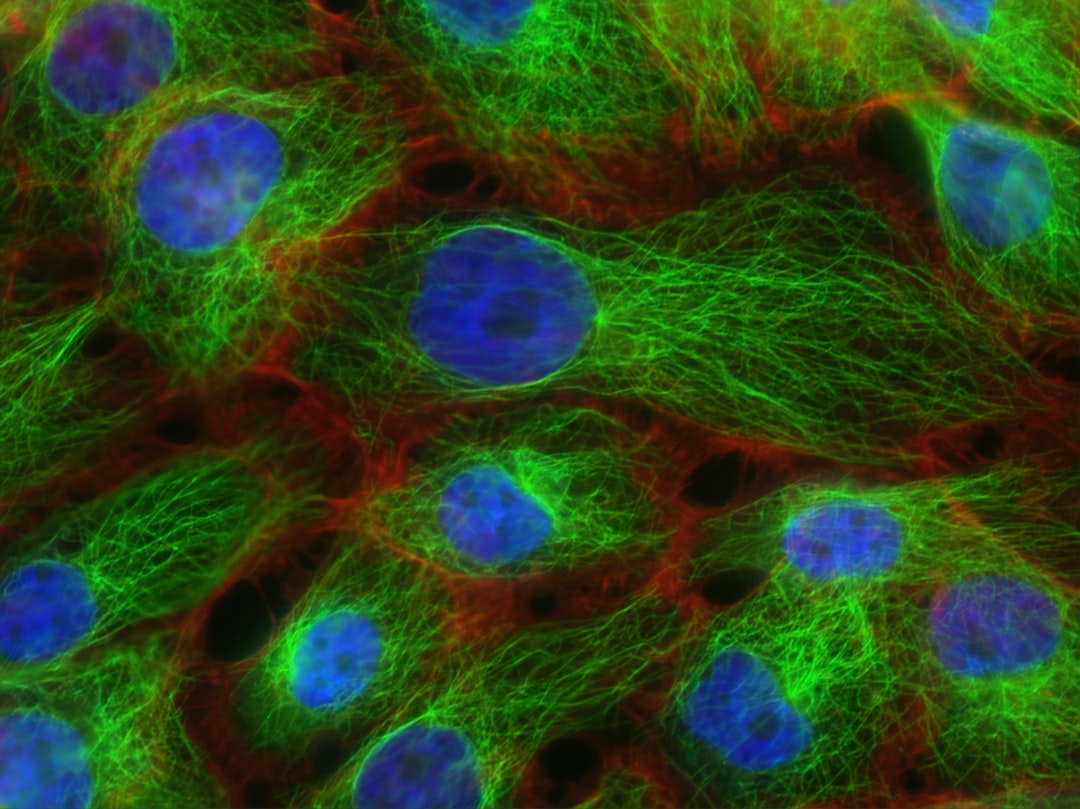What is it about?
This article demonstrates the key role of plant cell wall in the regulation of specific plant immune responses opening the possibility to enhance crops disease resistance and yield by modifying crops cell walls and applying to crops cell wall derived glycasn triggering immunity and disease resistance.
Featured Image

Photo by Sam Moqadam on Unsplash
Why is it important?
Plant cells are surrounded by an extracellular matrix known as cell wall, composed of sugars-based polymers (glycans) and structural glycoproteins. Plant wall is subjected to dynamic remodeling and compositional changes in response to developmental and environmental cues, like those occurring during pathogens infection. It was known that cell wall plays essential functions in plant disease resistance responses, however the specific contributions of cell wall composition on plant resistance and fitness had not been characterized in detail. This key question has been now addressed in the article recently published in the prestigious journal PNAS (https://www.pnas.org/content/118/5/e2010243118) by the group of Dr. Molina from CBGP (UPM-INA) and collaborators from Complutense University of Madrid (https://www.ucm.es/imi/juan-tinguaro-rodriguez-gonzalez), and University (https://www.univ-tlse3.fr) and INRAE/CNRS of Toulouse (https://www.inrae.fr/centres/occitanie-toulouse, France) and CRCC of University of Georgia (USA, https://www.ccrc.uga.edu/personnel/index.php?uid=24&personnel). They used a biosystem approach consisting in the analysis of the disease resistance/fitness phenotypes of a large set of Arabidopsis thaliana mutants with different cell wall composition alterations. The resistance of these mutants to three main type of pathogens (vascular, necrotrophic and biotrophic) that cause important disease and yield losses in crops was determined. The article nicely shows that plant cell wall is a key determinant of plant immune responses since modification of wall composition in this set of plant mutants resulted in a non-anticipated and high impact on their disease resistance with 85% of the mutants tested showing alterations in their defensive responses to at least one of the pathogens analyzed. Notably, authors demonstrate that increasing the resistance of mutants to necrotrophic or vascular pathogens negatively impacted on their biomass and seed yield. Using mathematical modelling they identified correlations between the amounts of specific wall glycans moieties in the cell wall of these plant mutants and their disease resistance and developmental phenotypes. The enhanced resistance to pathogens observed in the Arabidopsis cell wall mutants tested is not mediated by canonical immune pathways and might be determined by glycans released from their cell walls, since wall fractions isolated from the mutants´ walls triggered immune responses when applied to wild-type plants. These data provide the basis for using wall traits in crops breeding programs and for the identification of new cell wall-derived immune-active glycans that could trigger immune responses upon their application to crops and be used to replace chemical pesticides in crop protection, thus contributing to a more sustainable agriculture.
Perspectives
This is a relevant contribution in the field of plant cell wall and the determination of the role of this dynamic structure in plant fitness and adaptation to envirnmental stresses. The data of this article include for the first time the analysis of several traits and resistance phenotyes to several pahtogens, with different parasityc styles, of a relative large set of Arabidopis thaliana cell wall mutants. These analyses have revealed significant links between cell wall composition and plants phenotypes of interest for agriculture production openiing the possibility to breed crop variteis with modified cell wall composition and ehnanced yield or resistance to stresses. Also, this article revelas that the cell wall is a source of signaling glycans (sugars) that trigger immune responses and that might function as Damage-Associated Molecular patterns (DAMPs) regulating natural disease resistance of crops. The application of these "sweet DAMPs" to crops will contribute to a more sustainable agriculture replacing chemical pesticides. These data also open the possibility to use cell walls (plant biomass) as a source of novel crop protrection products contributing to circular bioeconmy.
Antonio Molina
Centro de Biotecnologia y Genomica de Plantas (CBGP, UPM-INIA)
Read the Original
This page is a summary of: Arabidopsis
cell wall composition determines disease resistance specificity and fitness, Proceedings of the National Academy of Sciences, January 2021, Proceedings of the National Academy of Sciences,
DOI: 10.1073/pnas.2010243118.
You can read the full text:
Contributors
The following have contributed to this page










